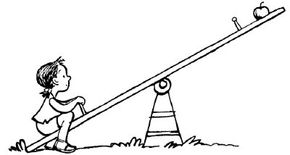Kids' natural curiosity makes them pretty terrific scientists. These Fun Physics Activities for Kids provide an entertaining and educational training ground for budding physicists.
In these activities, physics principles like gravity, friction, centrifugal force, and rotational pull are explored through hands-on experience. Rather than just reading about these ideas, kids can learn firsthand about the basic principles of physics in the great outdoors.
Advertisement
With a few basic supplies, kids can use a playground slide to explore physical science fundamentals like motion and friction.
Use a see-saw to learn about balance and scales. Discover what the see-saw in a nearby playground has to teach about physics basics.
A spinning object in flight rarely flies in a straight line. Learn how to track the path of a curve ball.
Those figure skaters on TV spin so fast -- how do they do it? A playground swing set has the answer.
Use a playground slide in a physics experiment -- find out how on the next page.
Looking for more cool activities for kids? Check out these links:
Advertisement

